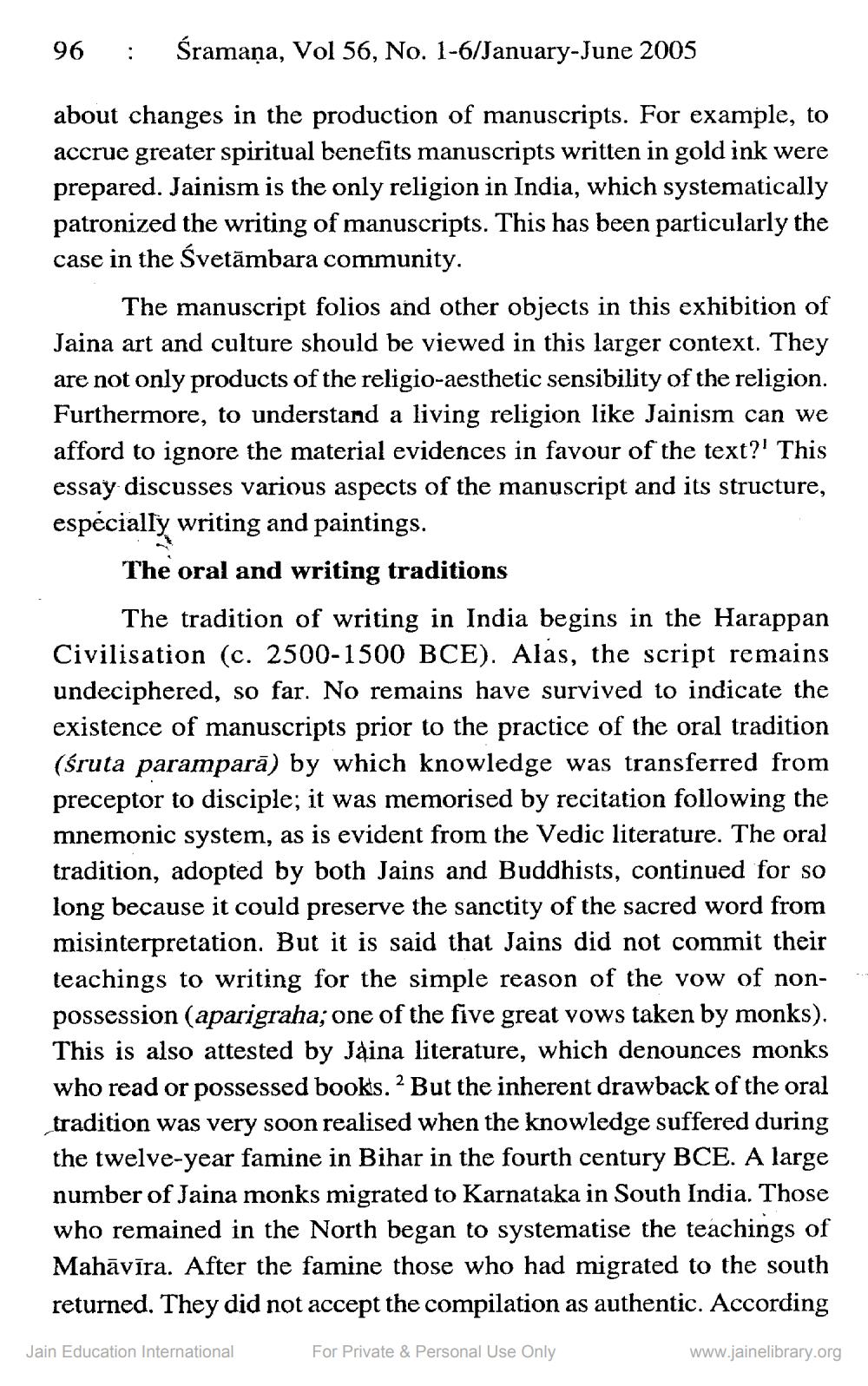________________
96 : Śramaṇa, Vol 56, No. 1-6/January-June 2005
about changes in the production of manuscripts. For example, to accrue greater spiritual benefits manuscripts written in gold ink were prepared. Jainism is the only religion in India, which systematically patronized the writing of manuscripts. This has been particularly the case in the Svetambara community.
The manuscript folios and other objects in this exhibition of Jaina art and culture should be viewed in this larger context. They are not only products of the religio-aesthetic sensibility of the religion. Furthermore, to understand a living religion like Jainism can we afford to ignore the material evidences in favour of the text?' This essay discusses various aspects of the manuscript and its structure, especially writing and paintings.
The oral and writing traditions
The tradition of writing in India begins in the Harappan Civilisation (c. 2500-1500 BCE). Alas, the script remains undeciphered, so far. No remains have survived to indicate the existence of manuscripts prior to the practice of the oral tradition (śruta paramparā) by which knowledge was transferred from preceptor to disciple; it was memorised by recitation following the mnemonic system, as is evident from the Vedic literature. The oral tradition, adopted by both Jains and Buddhists, continued for so long because it could preserve the sanctity of the sacred word from misinterpretation. But it is said that Jains did not commit their teachings to writing for the simple reason of the vow of nonpossession (aparigraha; one of the five great vows taken by monks). This is also attested by Jaina literature, which denounces monks who read or possessed books. 2 But the inherent drawback of the oral tradition was very soon realised when the knowledge suffered during the twelve-year famine in Bihar in the fourth century BCE. A large number of Jaina monks migrated to Karnataka in South India. Those who remained in the North began to systematise the teachings of Mahāvīra. After the famine those who had migrated to the south returned. They did not accept the compilation as authentic. According For Private & Personal Use Only
Jain Education International
www.jainelibrary.org




